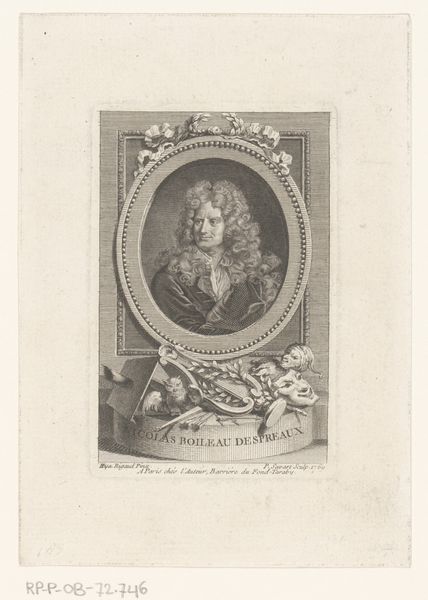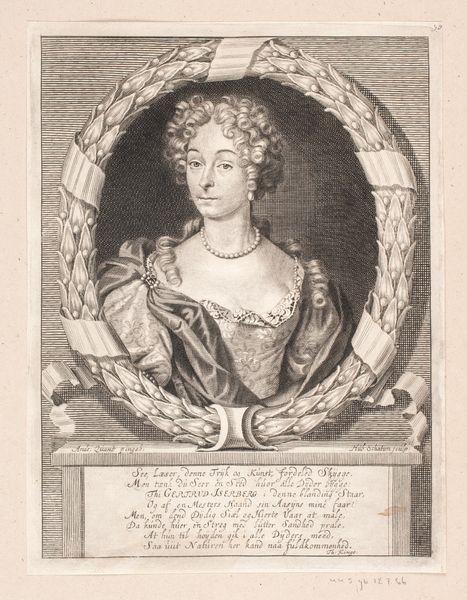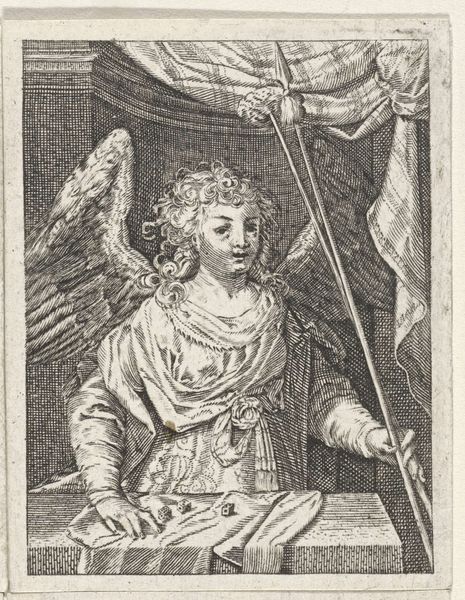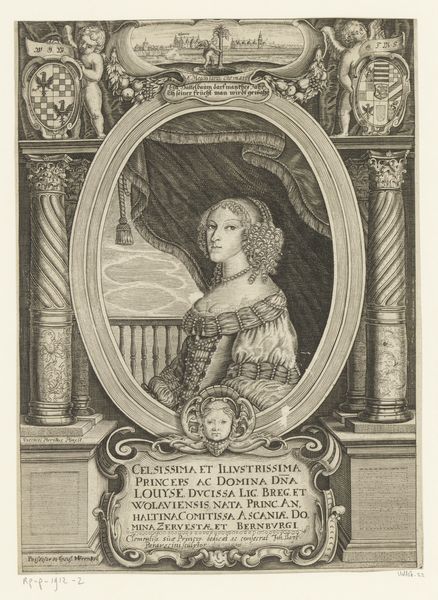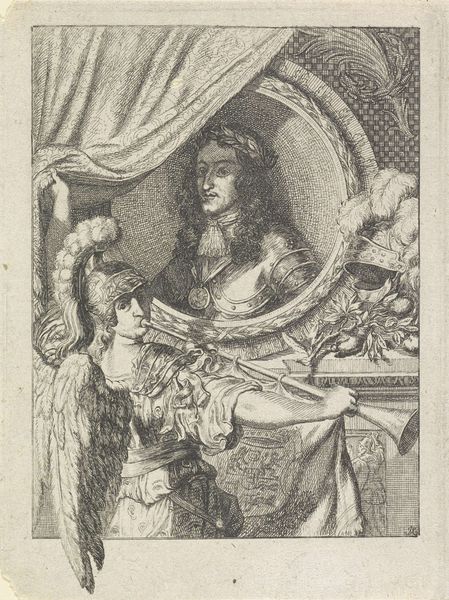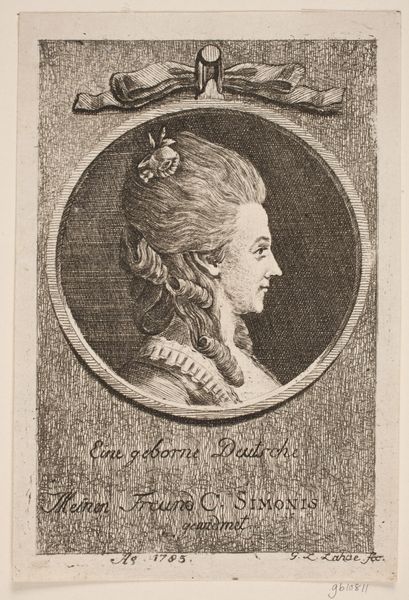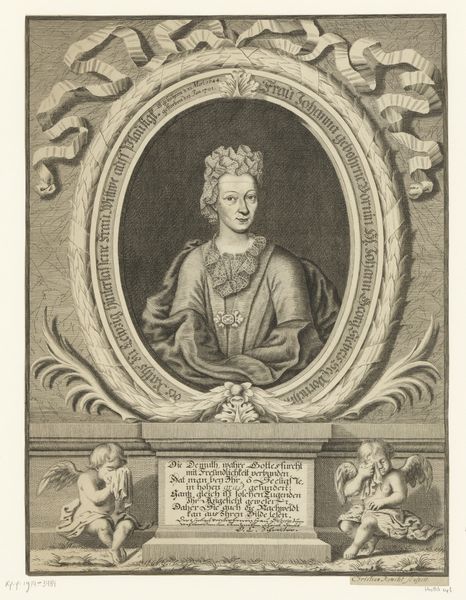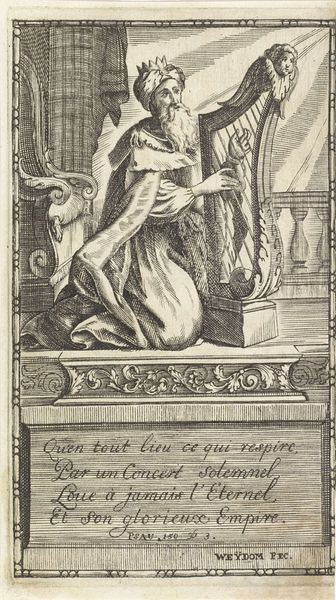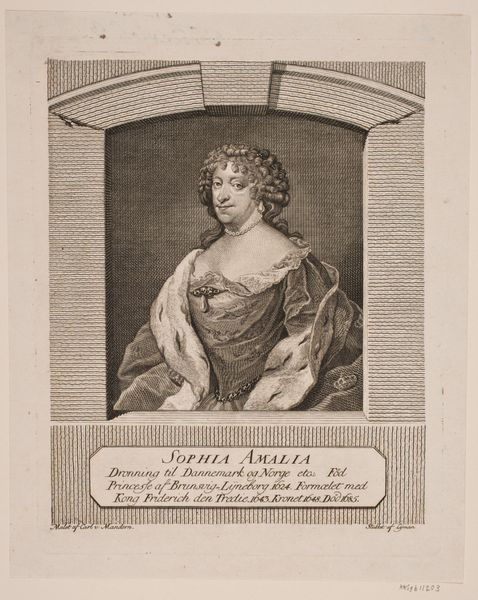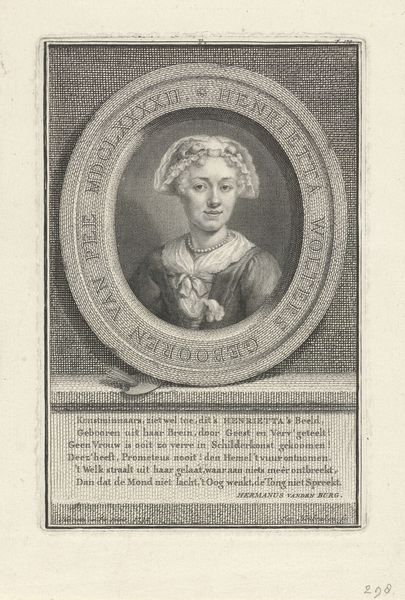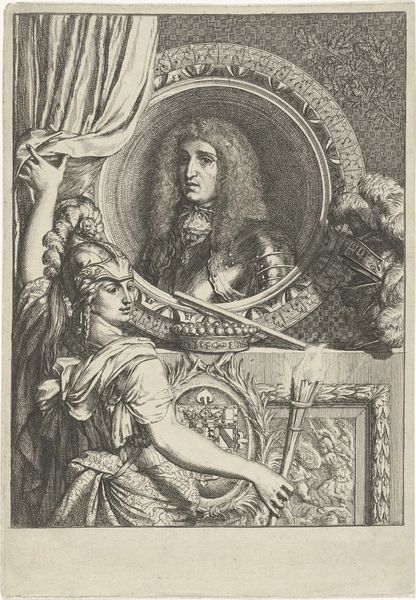
print, engraving
#
baroque
# print
#
history-painting
#
engraving
Dimensions: 214 mm (height) x 165 mm (width) (bladmaal)
Editor: This is "Augusta Winterfeldt," an engraving by Willem van der Laegh, made around 1674 or 1675. I find it interesting that she's presented as a sculpted bust, kind of mimicking classical ideals, yet also so firmly planted in her own time. What do you make of this portrayal? Curator: The interesting positionality is exactly where my attention is drawn. Consider how this print participates in the construction of aristocratic identity during the Baroque era. Representing Augusta as a bust, similar to Roman portraiture, elevates her status, aligning her with historical figures and ideas of timelessness. But is it really about *her*, or the projection of her family? Editor: That’s a good point. So the print functions almost as a… promotional piece? To burnish the family's reputation? Curator: Precisely. Prints like these circulated widely, disseminating the image and, by extension, the perceived virtues and power of the Winterfeldt family. How does the presence of text at the bottom shape the viewer's perception? Editor: Well, I hadn't thought of the text, to be honest. I mean it is not in English, which makes it feel opaque. Curator: Indeed. Consider the inscription then as part of this symbolic performance: How does language amplify the visual message to cement an historical reputation? Even without understanding the exact wording, can you grasp its importance in establishing not only a noble identity but an appeal to permanence through poetry, family, and time? Editor: That really changes how I see the print. I was initially drawn to the portrait aspect, but now I see how much it's about constructing a public image, which can influence how the Winterfeldt family was perceived, even today! Curator: Exactly! So the print goes beyond being simply a portrait; it actively shaped how Augusta and her family were—and continue to be—remembered within the larger historical narrative.
Comments
No comments
Be the first to comment and join the conversation on the ultimate creative platform.
